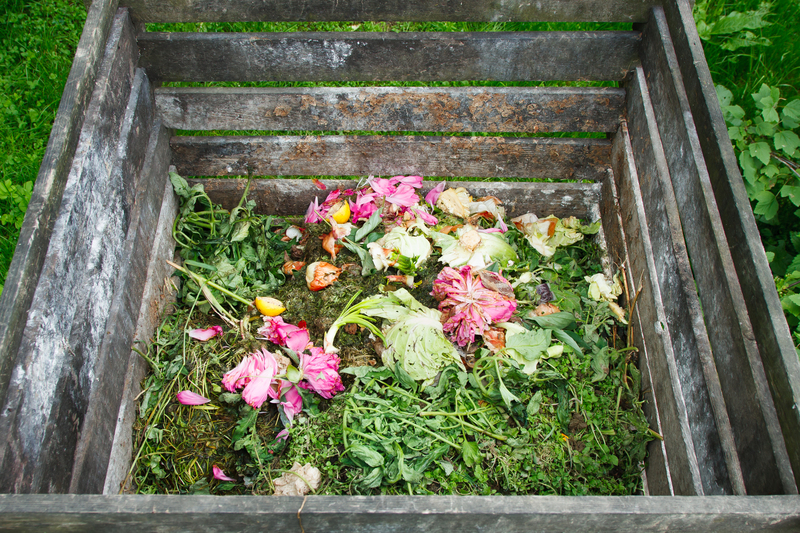Exploring New Pathways to Recycle Restaurant Food Waste
In today's world, sustainability is no longer just a trend but a necessity. With mounting concerns over environmental degradation, efficient waste management has become increasingly important. Restaurants, being significant contributors to food waste, have a crucial role to play in adopting innovative recycling methods. Our exploration into new pathways to recycle restaurant food waste aims to uncover effective and actionable solutions.
The Urgency of Addressing Restaurant Food Waste
Food waste is a pressing issue that impacts not just the environment, but economic and social domains as well. According to the Food and Agriculture Organization, an estimated 1.3 billion tons of food are wasted globally each year. Restaurants are significant contributors to this issue, with considerable volumes of leftover food discarded daily. Addressing this challenge is not just about reducing waste but also about initiating a circular economy where resources are conserved and reused.
Understanding the Challenges
- Volume and Variety: Restaurants generate a diverse range of food waste types, from vegetable trimmings to uneaten meals, making uniform recycling practices difficult.
- Logistics: Implementing and managing recycling programs can be logistically challenging and costly for restaurateurs.
- Regulatory Hurdles: Different regions have varied regulations concerning food waste disposal, complicating the implementation of standardized protocols.
Innovative Pathways to Recycle Restaurant Food Waste
By embracing innovation, restaurants can transform their waste management processes. Several promising methods are emerging in the field of food waste recycling.
1. Composting
Composting is perhaps the most well-known method of food waste recycling, turning organic waste into nutrient-rich compost that can be used to enrich soil. While traditional composting requires significant space, innovations in technology now allow restaurants to implement on-site composting machines that efficiently process waste. This approach not only reduces the waste sent to landfills but also provides a valuable product for urban gardens and parks.
2. Anaerobic Digestion
Anaerobic digestion involves the breakdown of organic matter by microorganisms in an oxygen-free environment, producing biogas and digestate. This process is becoming increasingly popular as it generates renewable energy while minimizing waste. Many countries now have facilities where restaurants can send their food waste for anaerobic digestion, converting waste into energy and fertilizer.
3. Waste-to-Protein Conversion
Following the goal of creating a circular economy, the conversion of restaurant food waste into animal feed or even insects (such as black soldier fly larvae, which can be used as animal feed) is gaining traction. This method, waste-to-protein conversion, not only reduces food waste but also supports sustainable agriculture.
4. Advanced Recycling Technologies
Emerging technologies are continually pushing the boundaries of what's possible in food waste recycling. Some promising technologies include:
- Hydrothermal Carbonization: This process converts organic waste into a carbon-rich material that can be used as biofuel. It has the potential to turn restaurant waste into sustainable energy.
- Bioplastics Production: By utilizing waste carbohydrates, bioplastics can be created, offering an alternative to traditional plastic and closing the resource loop.
Implementing Effective Waste Management Strategies
To effectively recycle food waste, restaurants must adopt practices that integrate seamlessly into their operations.
Training and Awareness
Educating staff about the importance of waste management and training them in best practices can drive more sustainable restaurant operations. An aware team can play a pivotal role in implementing food conservation measures and maintaining recycling initiatives.
Collaboration and Partnerships
Building partnerships with waste management services, local farmers, and recycling companies can provide restaurants with resources and expertise. These collaborations can foster innovative solutions tailored to specific business needs, exemplifying the concept of community-driven sustainability.
Technology Integration
Utilizing technology, such as IoT devices and data analytics, can help restaurants track waste, understand patterns, and optimize processes. By identifying peak waste periods, restaurants can adapt purchasing and production strategies to minimize excess.
Conclusion: A Sustainable Future
The path to a sustainable future involves a commitment to innovation and adaptation. By exploring new pathways for recycling food waste, restaurants can not only lessen their environmental impact but also reap economic benefits. The integration of cutting-edge technologies, student-led initiatives, community involvement, and governmental support can pave the way for transformative change. As we delve deeper into these innovative solutions, the goal remains clear: to foster a resilient and sustainable restaurant industry.
Engaging in this exploration of innovative recycling pathways will ensure that restaurants not only enhance their green credentials but actively contribute to a more sustainable world. The move to recycle food waste is not just an ethical imperative but a business one, setting the stage for more sustainable practices across industries worldwide.

